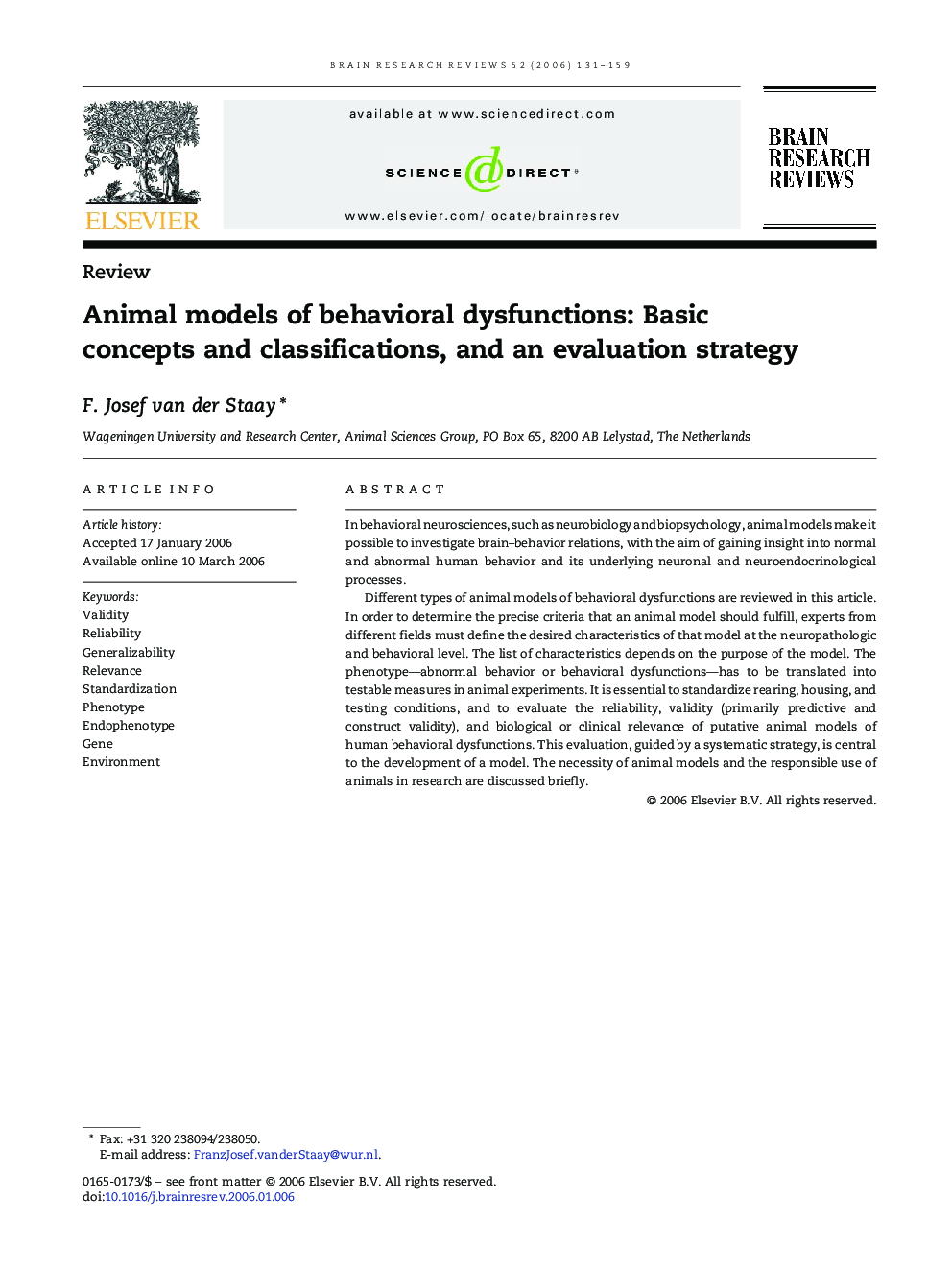| Article ID | Journal | Published Year | Pages | File Type |
|---|---|---|---|---|
| 4334015 | Brain Research Reviews | 2006 | 29 Pages |
In behavioral neurosciences, such as neurobiology and biopsychology, animal models make it possible to investigate brain–behavior relations, with the aim of gaining insight into normal and abnormal human behavior and its underlying neuronal and neuroendocrinological processes.Different types of animal models of behavioral dysfunctions are reviewed in this article. In order to determine the precise criteria that an animal model should fulfill, experts from different fields must define the desired characteristics of that model at the neuropathologic and behavioral level. The list of characteristics depends on the purpose of the model. The phenotype—abnormal behavior or behavioral dysfunctions—has to be translated into testable measures in animal experiments. It is essential to standardize rearing, housing, and testing conditions, and to evaluate the reliability, validity (primarily predictive and construct validity), and biological or clinical relevance of putative animal models of human behavioral dysfunctions. This evaluation, guided by a systematic strategy, is central to the development of a model. The necessity of animal models and the responsible use of animals in research are discussed briefly.
